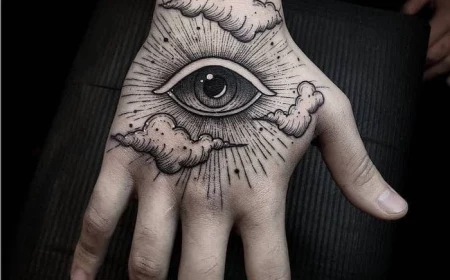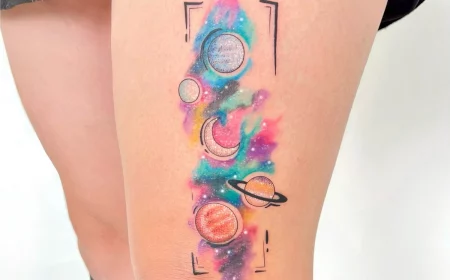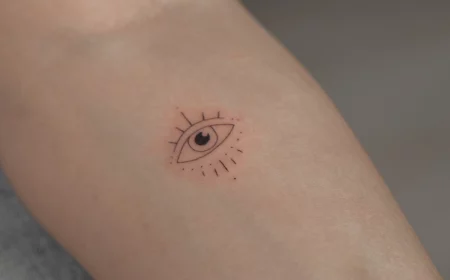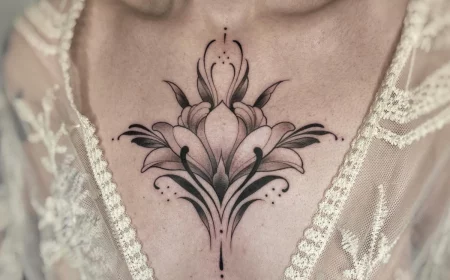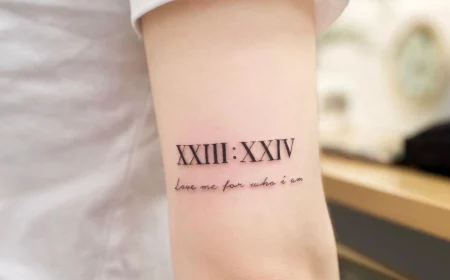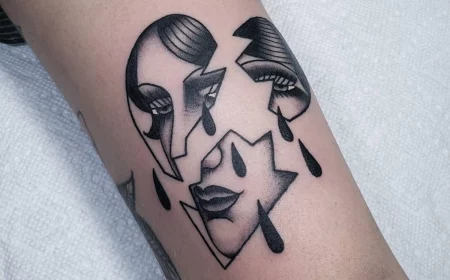Thinking About a Mandala Tattoo? Here’s What You Really Need to Know
I’ve had a tattoo machine in my hand for what feels like a lifetime. In all that time, I’ve seen countless styles fade in and out, but some designs just stick around. The mandala is one of those timeless classics. My first real encounter with one wasn’t just seeing a picture; it was watching my mentor spend an entire afternoon perfecting a stencil for a massive back piece. He told me, “This isn’t just a pretty pattern. It’s a map of the universe, and every single line has to be perfect.” That really stuck with me. A mandala tattoo is a huge commitment, not just for the person getting it, but for the artist who brings it to life.
In this article
These incredible designs have roots in Hindu and Buddhist traditions, where they’re used as visual aids for meditation and symbolize balance and wholeness. So, when you decide to put one on your skin, you’re choosing more than just a cool geometric shape; you’re embracing a symbol with some seriously deep history. My job is to honor that while creating something that fits your body and your vibe perfectly. This guide is everything I’ve learned about what makes a mandala tattoo truly great, from the first spark of an idea to the final, healed piece of art.
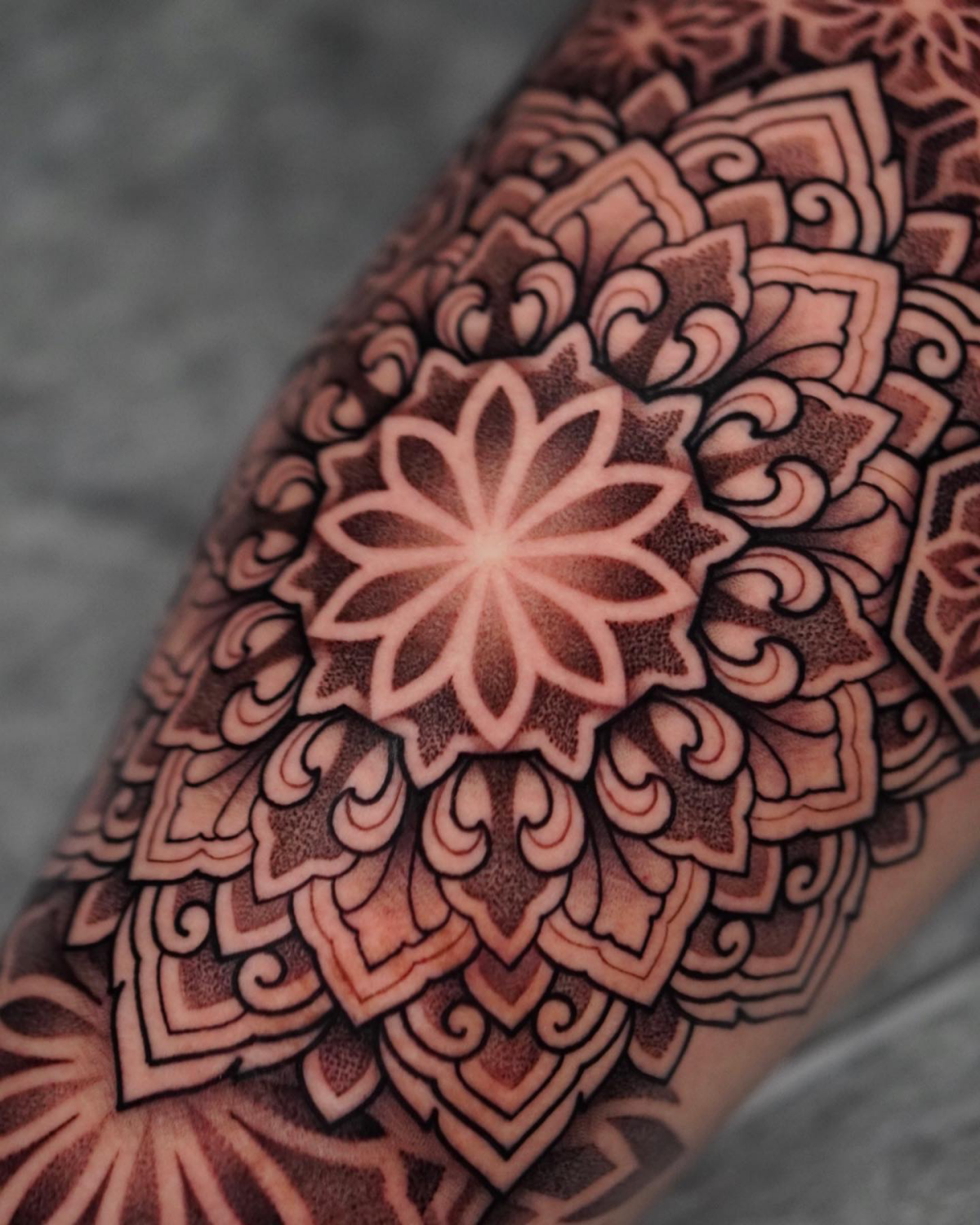
First Things First: It’s All About Geometry
Before we even think about needles and ink, we have to get the foundation right. Mandalas are built on what’s known as sacred geometry. And no, that’s not just some trendy term—it’s the idea that certain shapes and patterns are the fundamental building blocks of everything. Understanding this helps me design a tattoo that doesn’t just look good, but feels right.
At its heart, a mandala is a circle, representing unity, eternity, and wholeness. Inside that circle, there’s a center point, sometimes called a ‘bindu,’ which is seen as the point of creation. The entire design expands outward from this single dot. This is why the center of a mandala tattoo is so critical; it’s the anchor for the whole piece. I always start my designs from the center and build out, following the symbolism.
The patterns inside are full of meaning. You’ll often see squares, which can represent the physical world and stability. Triangles pointing up might symbolize ascension, while those pointing down can represent grace and feminine energy. The lotus flower is another huge one. It symbolizes purity and spiritual awakening, growing from murky water into a perfect bloom. When a client tells me they want a design to represent personal growth, we almost always weave in some lotus petals. The design itself tells a story.
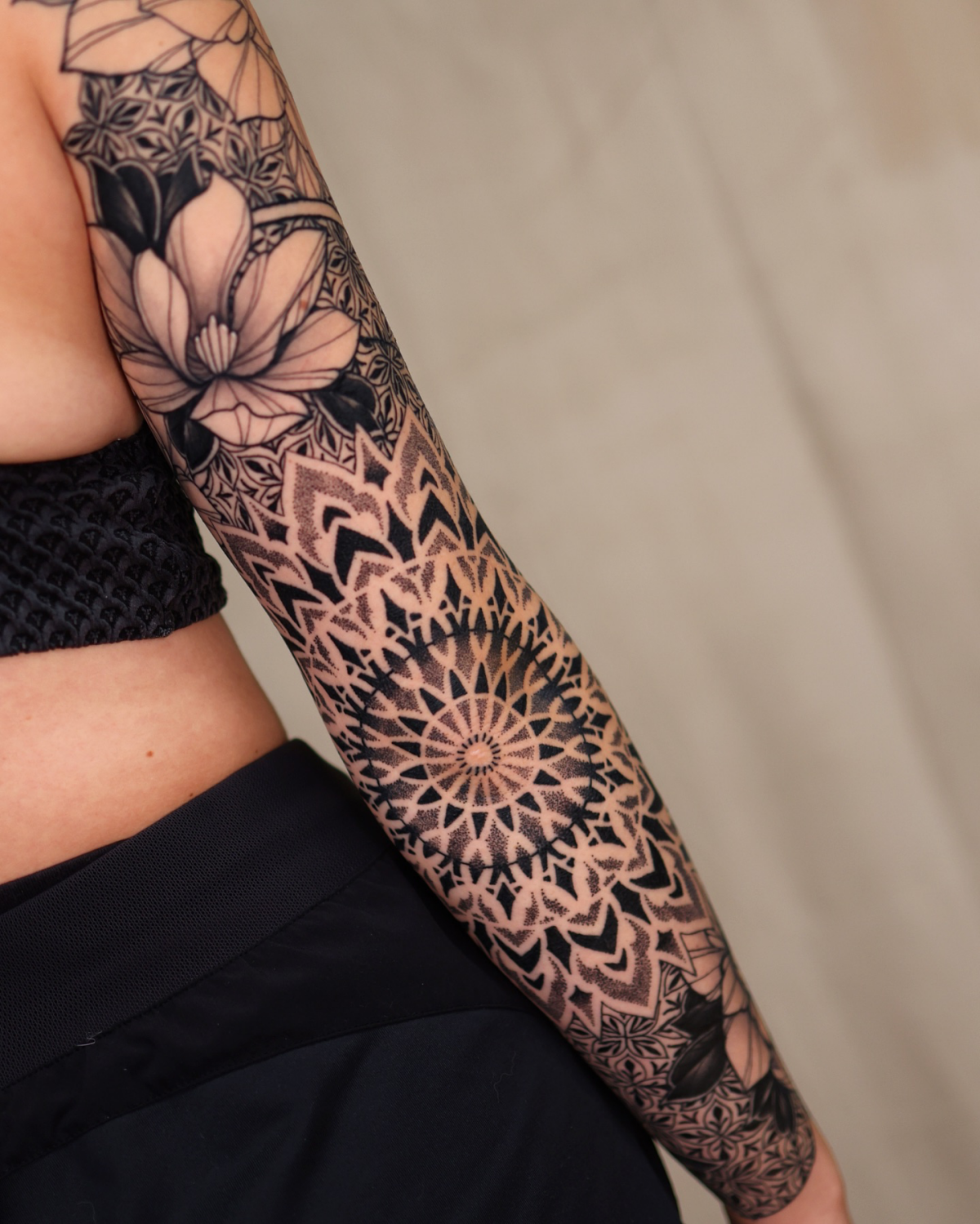
The Nitty-Gritty: How We Make It Perfect
Honestly, creating a flawless mandala tattoo is all about precision. The symmetry is everything. One shaky line or an uneven gap can throw off the whole vibe. This is where professional technique makes all the difference.
Stencils Are Non-Negotiable
A mandala tattoo is only as good as its stencil. There’s no “freehanding” a perfectly symmetrical design this complex, period. I start by drawing the mandala digitally, usually on an iPad, which lets me create perfect lines and repeat patterns with zero error. Once you approve it, I print it onto special thermal paper.
Applying the stencil is a delicate dance. The skin has to be prepped and perfectly clean, and I’ve got to get the placement right on the first try. On a tricky, curved area like an elbow or knee, it’s even tougher. The skin distorts the stencil as it moves. I’ll often have a client stand, sit, and bend the joint just to see how the design will shift. I once spent almost an hour on a knee placement, reapplying the stencil three times until it was just right. If the stencil is crooked, the tattoo is crooked forever. You can’t rush this part.
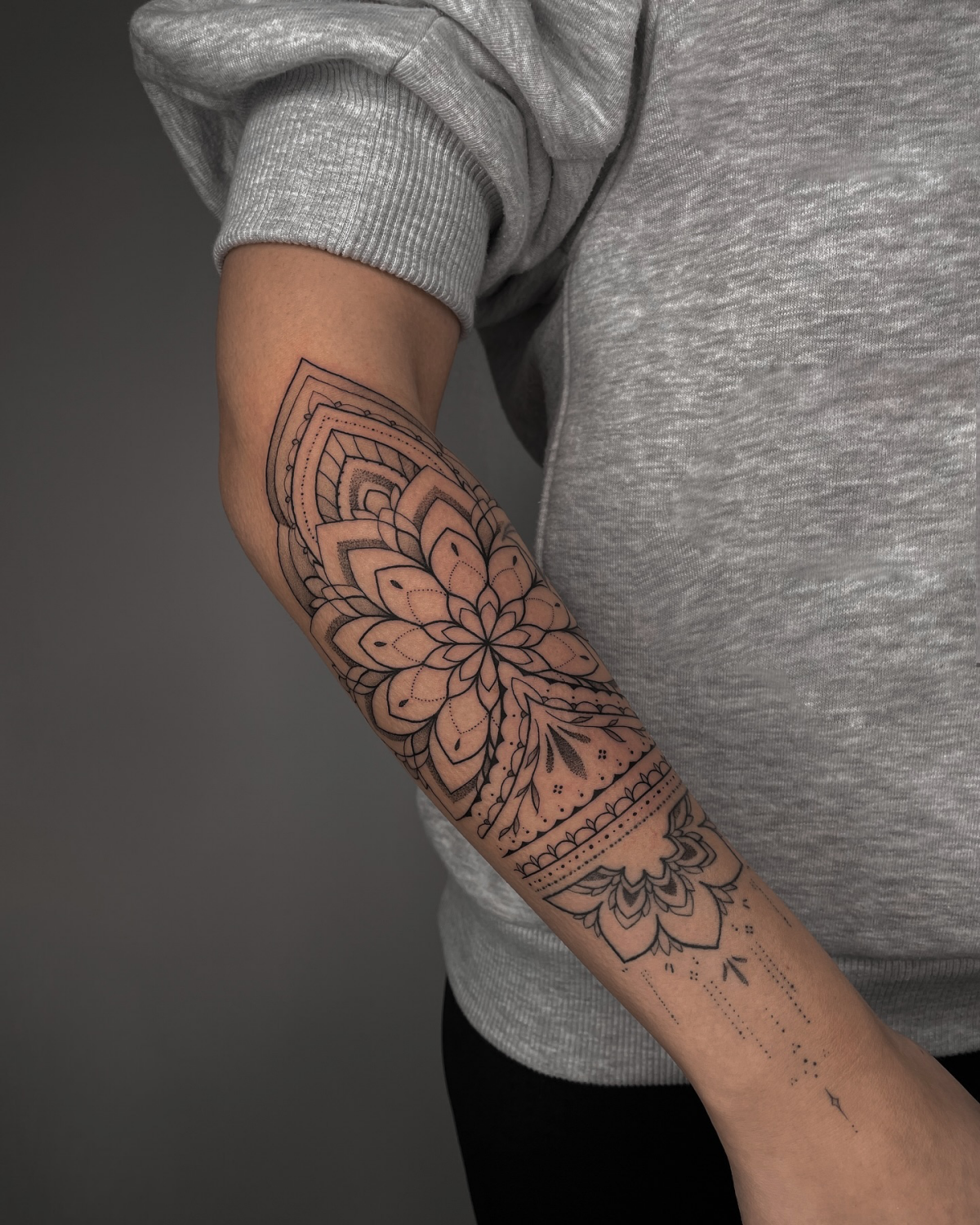
Linework, Dotwork, and Getting It Right
For those crisp, clean lines that mandalas are famous for, needle choice is key. I usually grab a small needle grouping, like a 3 or 5 Round Liner (3RL or 5RL), for fine details. For bolder outlines, I might jump up to a 7RL or 9RL. It all depends on the scale of the piece.
Many modern mandalas use a beautiful shading technique called dotwork or stippling. Instead of smooth gradients, we use thousands of tiny dots to create texture and depth. It’s a much softer, more ethereal look, but it is INCREDIBLY time-consuming. A hand-sized dotwork mandala can easily take twice as long as a linework version.
Quick tip: This is where time and cost really come into play. A simple, fist-sized linework mandala might take 2-3 hours. That same design done in dotwork? You could be looking at 4-6 hours, easy. Since most artists charge by the hour, that’s something to keep in mind for your budget.
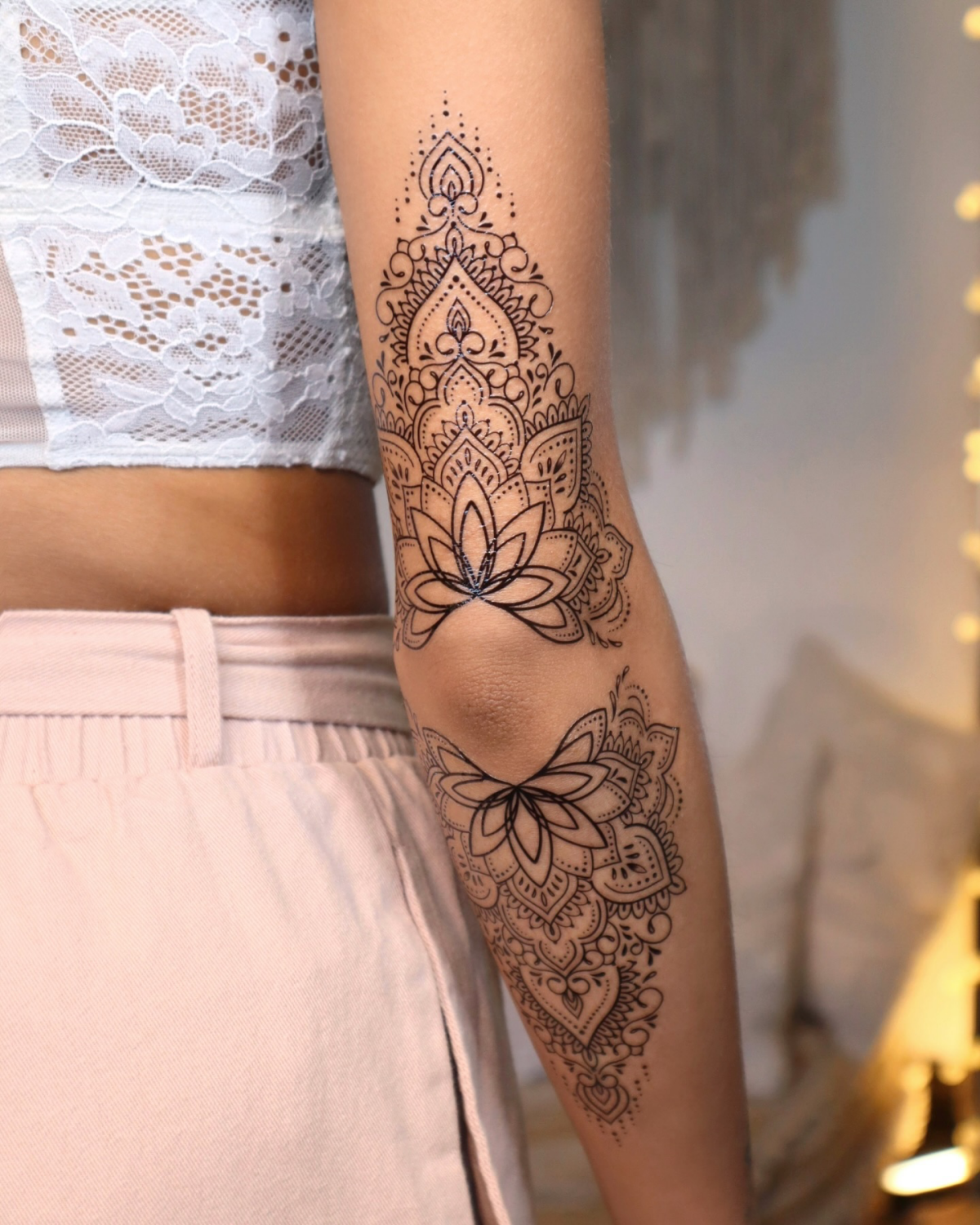
Where to Put It: Working With Your Body
A tattoo should flow with the body, not fight it. This is especially true for a circular design like a mandala. Some spots are definitely better suited than others.
Placement and the Pain Factor
Okay, let’s get to the question everyone is thinking: how much does it hurt? It depends entirely on placement. Flatter, fleshier areas like the middle of your back, the top of your thigh, or your forearm are great canvases. The design lays flat and the pain is generally manageable for most people.
But a heads-up! Curved and bony spots like the shoulder cap, elbow, sternum, and knee are a different story. The pros call these spots “spicy” for a reason. The skin is thin and right over the bone, making the vibration much more intense. It’s doable, but you need to be ready for it.
And I’m always brutally honest with clients about tattoos on hands and feet. They look amazing when they’re fresh, but they live a hard life. Think about a crisp, fine-line mandala on your hand. Five years from now, after all the hand-washing and daily friction, those perfect lines will have softened and spread. Some might even have fallen out. It’s not a bad tattoo, it’s just the reality of that skin. Expect to need touch-ups, and know that it will never again have that ‘day one’ sharpness.
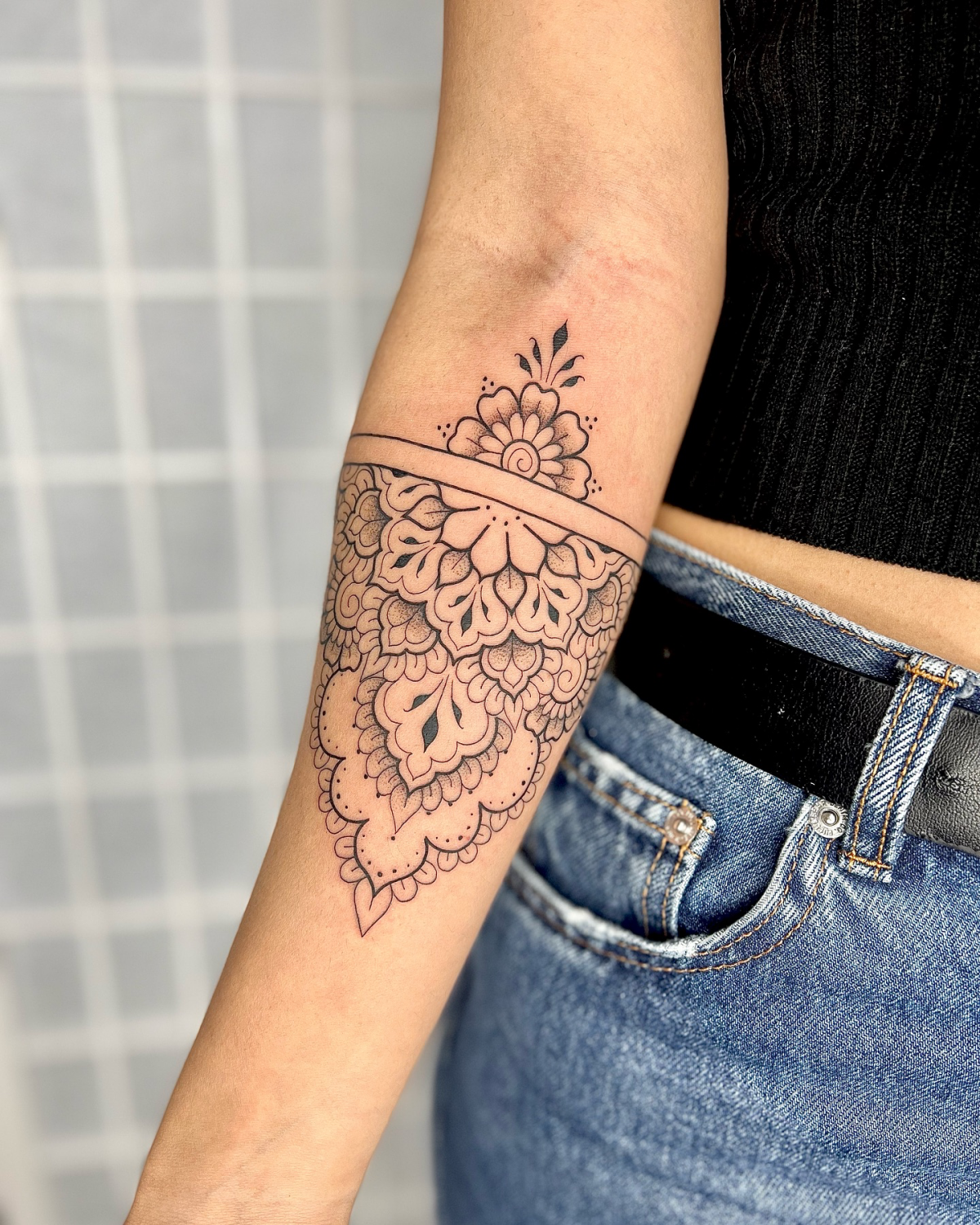
Choosing Your Style (and Your Artist)
While all mandalas are circular, the artistic approaches can be wildly different. Here’s a breakdown to help you figure out your vibe.
Linework vs. Dotwork: The Vibe and the Commitment
When you boil it down, you’re usually choosing between two main styles. Think of traditional linework as the bold, graphic option. The aesthetic is all about crisp, mathematical perfection. It’s often a bit faster to execute, which can make it a little friendlier on the wallet.
On the other hand, dotwork gives you a softer, more delicate look. The shading is built from thousands of tiny dots, creating these beautiful, gentle gradients. The commitment here is bigger, though. It takes a lot more time in the chair, which means it also costs more. A full sleeve done in dotwork can take upwards of 40 hours and a serious financial investment.
A Note on Skin Tone
Oh yeah, let’s talk about skin tone, because it absolutely matters. A great artist knows how to make a design pop on any canvas. On darker skin, super-fine lines or very light dotwork can sometimes heal less visibly than you’d hope. This doesn’t mean you can’t get one! A skilled pro will adjust the design for you. We might use slightly thicker lines, pack the dots a bit denser, or—and this is a great trick—leave more ‘negative space’ (open skin) in the pattern to create bolder contrast. The goal is always the same: to create a tattoo that looks powerful and amazing for years to come.
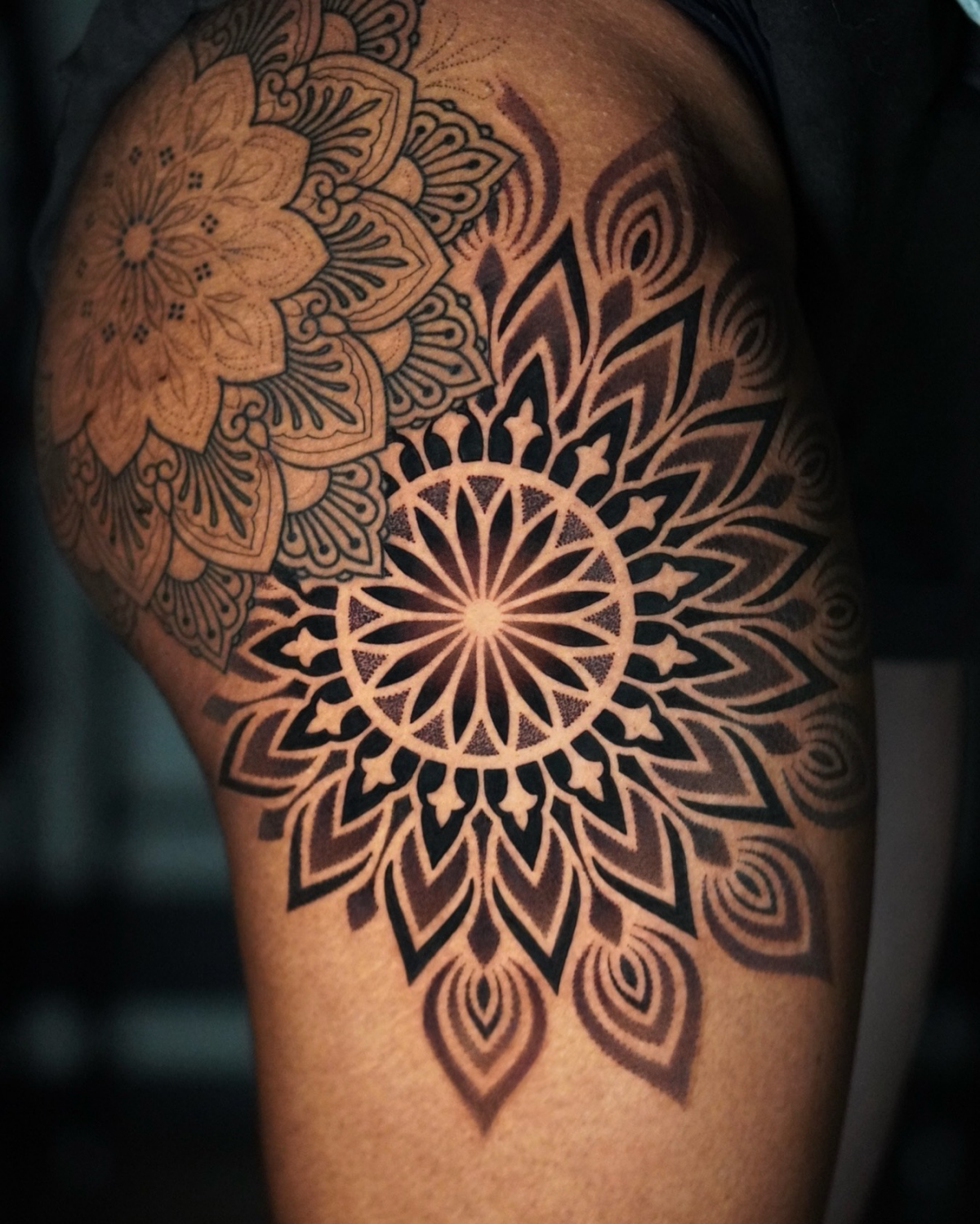
The Consultation: How to Get What You Want
The best tattoos are a team effort. When you come in for a consultation, you should have some ideas, but also be ready to listen to professional advice.
Come Prepared, But Be Flexible
Bring in reference photos, but be ready to explain what you like about them. Is it the line weight? The flow? A specific symbol? The more info you give me, the better. But please, don’t ask an artist to just copy someone else’s tattoo. We’re here to create something custom for you.
Red Flags to Watch For in a Portfolio
This is your time to interview the artist, so don’t be shy. A good artist will be happy to answer your questions. Here’s what to look for in their portfolio:
- Look for HEALED photos! Fresh tattoos can be deceiving. Healed work shows an artist’s true skill.
- Check the lines. Do they look blurry or fuzzy at the edges? That’s called a “blowout,” and it’s a sign of poor technique.
- Examine the symmetry. Is it actually symmetrical? Zoom in. A lopsided mandala is a bummer.
- Be cautious if all their photos are fresh, bloody, and overly filtered. It might be hiding subpar work.
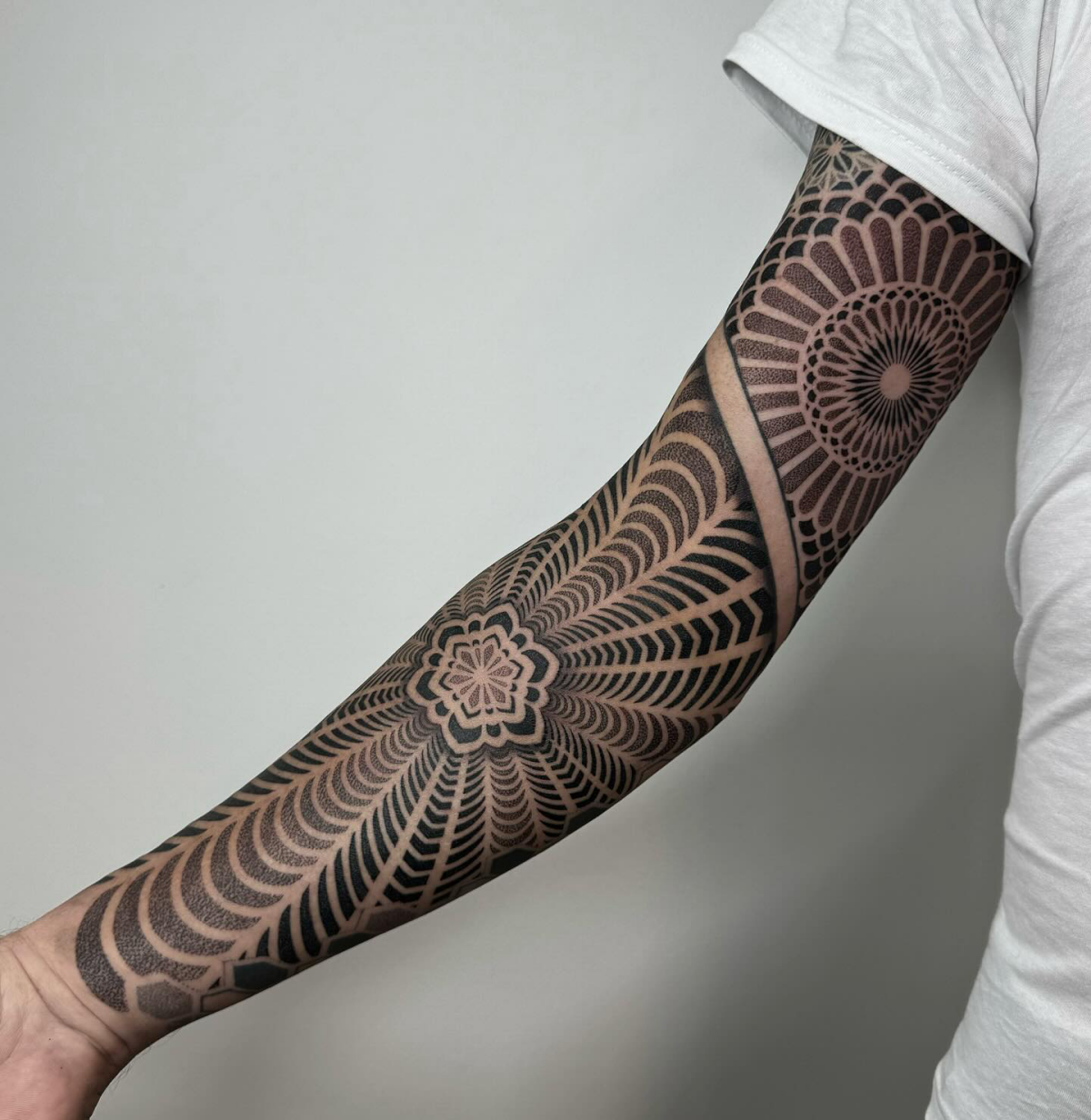
Let’s Talk Money
Don’t be afraid to discuss your budget. Prices vary wildly by artist and location, but to give you a ballpark: a simple, palm-sized linework mandala might run you $250-$500. A more intricate dotwork version of that same size could easily be $500-$900+. A full back piece is a major project that can run into several thousands of dollars, paid over multiple sessions. A pro will be transparent about their hourly rate and give you a solid estimate.
Healing 101: How to Protect Your Investment
Getting the tattoo is only the first half. Aftercare determines how it will look for the rest of your life. Don’t mess this part up.
Your First Few Days: A No-Stress Healing Guide
I’ll clean the tattoo and cover it, often with a clear, adhesive film called ‘second skin’. This stuff is amazing. You just leave it on for 3-5 days. You’ll see some inky, goopy fluid build up underneath—that’s totally normal. It’s just plasma and excess ink.
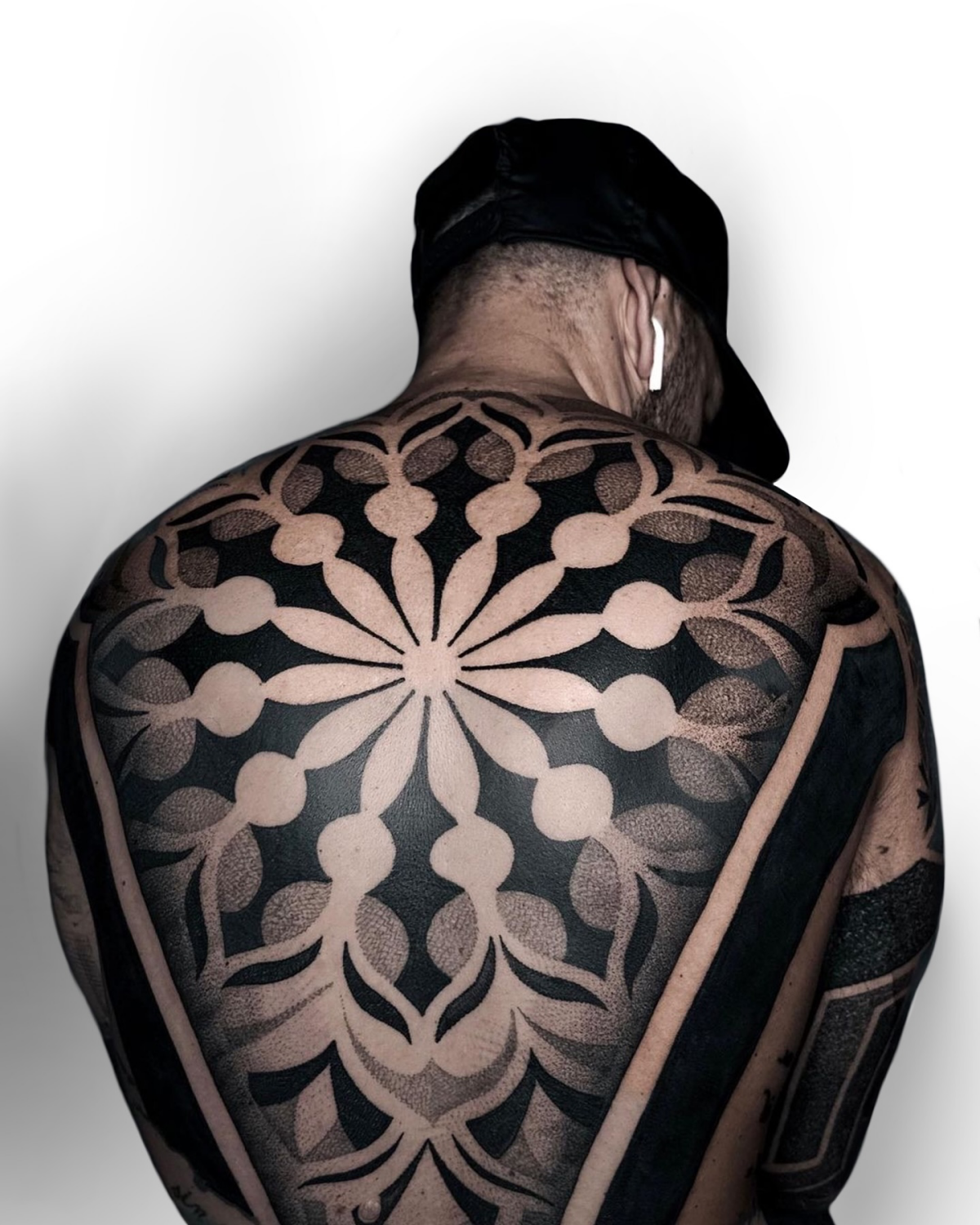
When it’s time to take it off (I recommend in a warm shower), peel it back slowly. Then, you’ll start the classic cleaning routine. Gently wash the tattoo 2-3 times a day with a mild, unscented soap. Pat it dry with a clean paper towel, never a cloth towel. For the first day or two, just let it be. Once it starts to feel dry and tight, you can begin to moisturize.
The Aftercare Shopping List
You don’t need fancy products. Just head to any drugstore and grab two things:
- An unscented, antibacterial liquid soap (Dial Gold is a classic and costs about $5).
- A simple, fragrance-free lotion (Lubriderm, Cetaphil, or Aquaphor are perfect and run about $10).
When you moisturize, use a TINY amount. A rice-grain-sized dab is enough for a palm-sized area. Rub it in until it disappears. If your tattoo looks shiny or greasy, you used too much. Blot the excess. The tattoo will scab and flake like a sunburn. DO NOT pick at it!
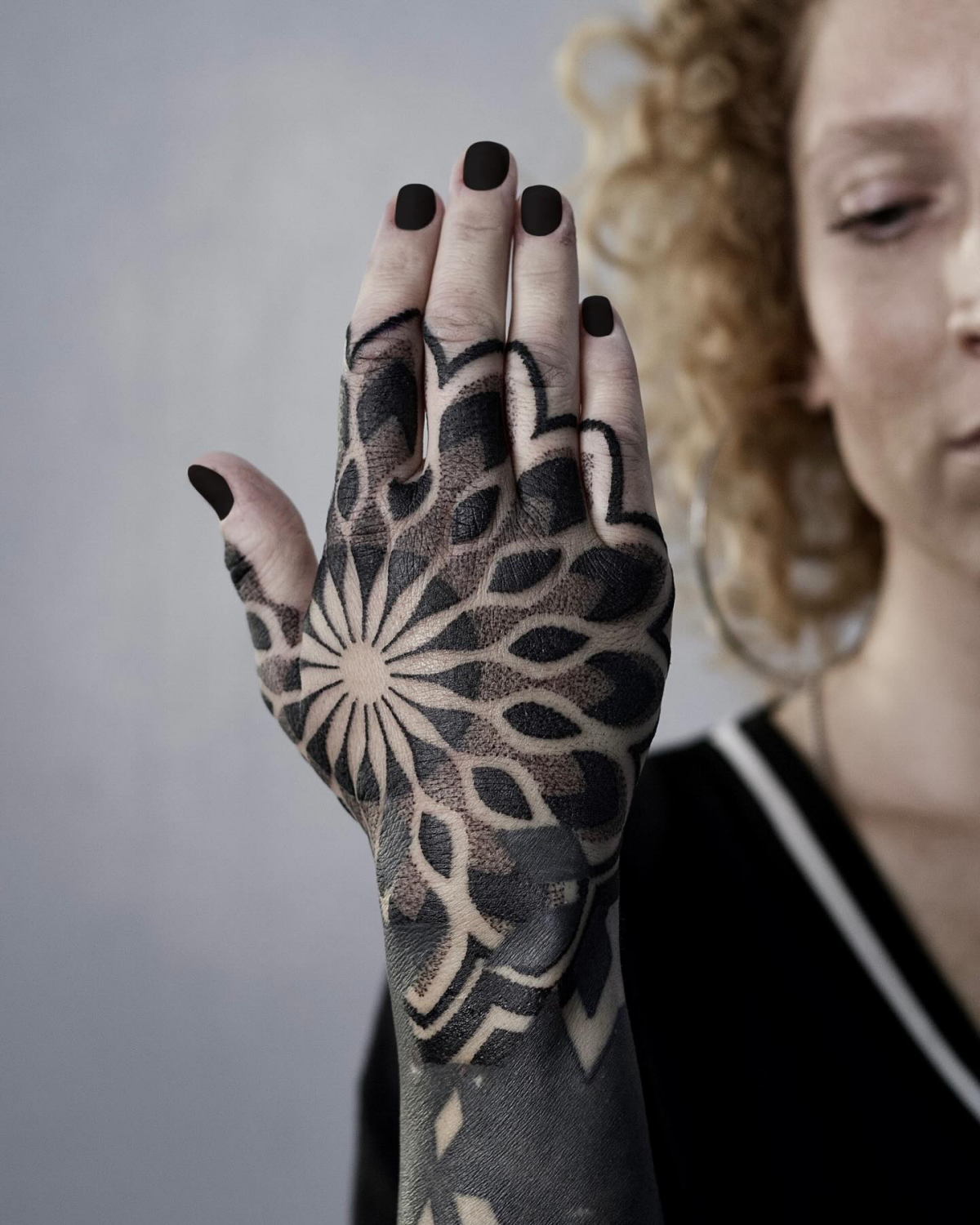
Your Tattoo’s #1 Enemy
The single most destructive thing for your tattoo is the sun. UV rays shatter the ink particles in your skin, causing your tattoo to fade and blur. For a fine-line mandala, a few summers of unprotected sun exposure can turn it into a blurry mess. Sunscreen is not optional; it’s a lifetime commitment if you want your art to last.
A mandala tattoo is a journey. It starts with appreciating its beauty, continues with finding the right artist, and involves hours of patient work from me and weeks of diligent care from you. The result is more than just ink—it’s a permanent symbol of balance and a piece of art you’ll carry with you forever.
Galerie d’inspiration
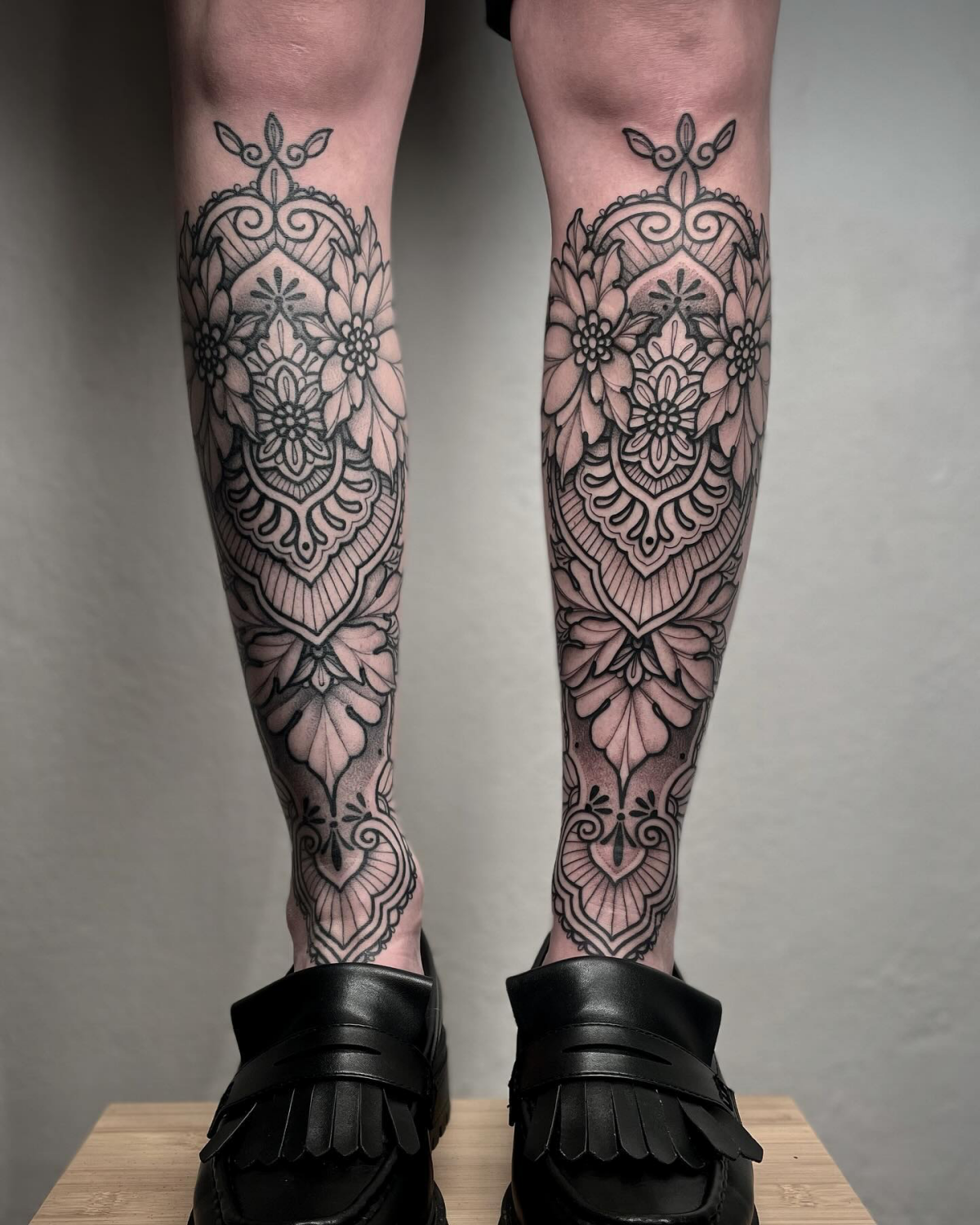
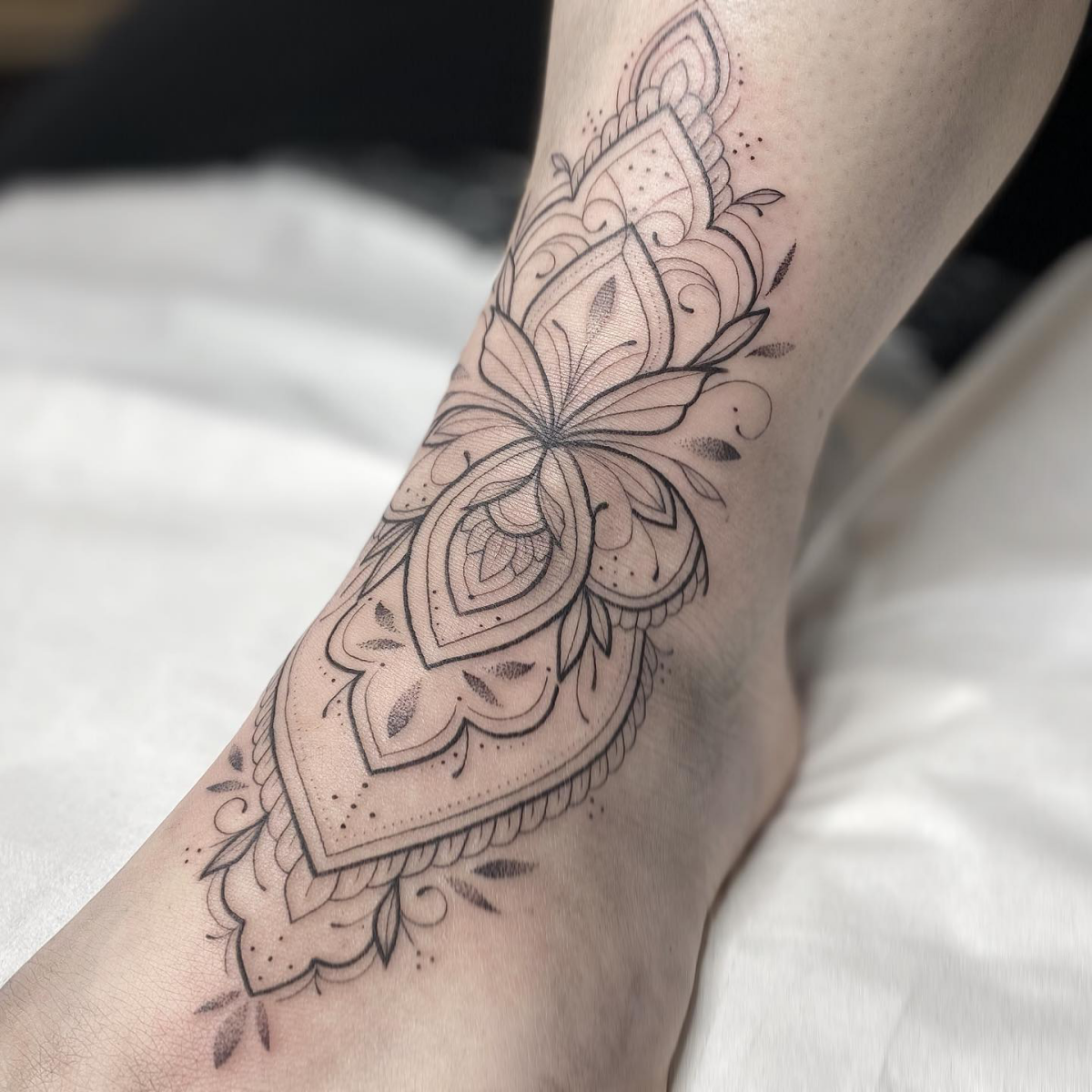
Dotwork: This technique uses thousands of tiny dots to create shading and form. The result is a softer, more ethereal look that can appear less harsh on the skin. It’s a patient process, often described as meditative by those receiving it.
Linework: Here, crisp, solid lines define the entire design. It offers a bold, graphic, and highly defined aesthetic. This style is perfect for those who want their mandala to have a strong visual impact and clear geometric precision.
Ultimately, the choice depends on the feeling you want to evoke: the gentle fade of dotwork or the sharp clarity of linework.
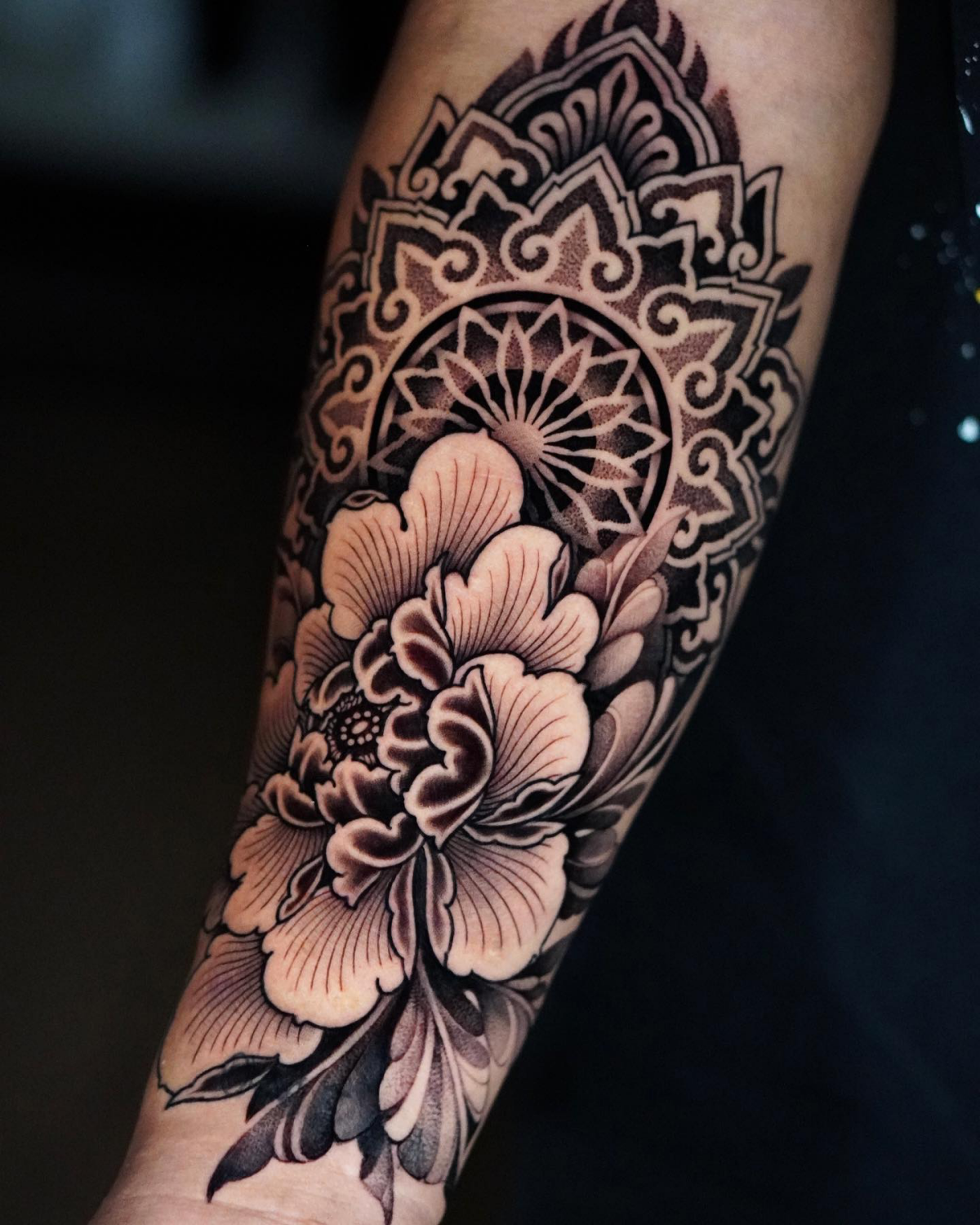
A complex mandala tattoo is one of the ultimate tests of an artist’s consistency. A palm-sized piece can easily require 4 to 6 hours of unwavering focus.
Wondering why a mandala tattoo often comes with a higher price tag? It’s a marathon of precision. Unlike other styles that allow for some artistic looseness, every line must be perfect, every curve symmetrical, and every connection seamless. The artist isn’t just drawing; they’re performing a technical feat that demands hours of concentration, often using specific inks like Dynamic Triple Black for its non-fading intensity. You’re investing in time, skill, and the guarantee that your symbol of harmony won’t be spoiled by a single shaky line.
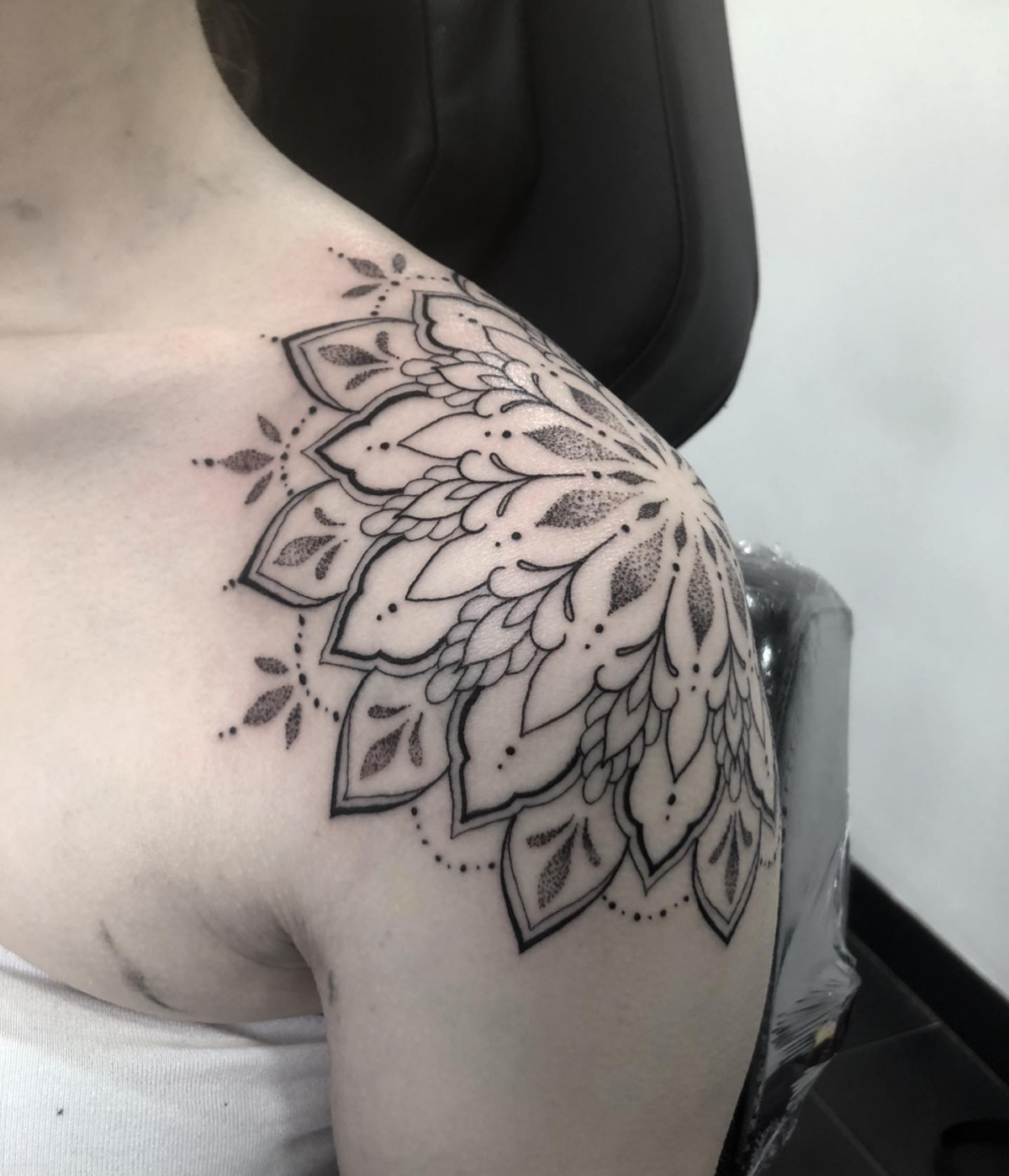
A mandala’s beauty is in its balance, and that extends to how it fits your body. To ensure it looks harmonious and not distorted, consider these prime locations:
- The Sternum: It’s a naturally symmetrical canvas, perfect for a design that radiates from a central point.
- The Forearm or Calf: These relatively flat, long surfaces allow the full pattern to be displayed without wrapping too aggressively.
- The Back: A classic for a reason. The large, stable area of the upper or lower back can host intricate, large-scale mandalas without compromise.
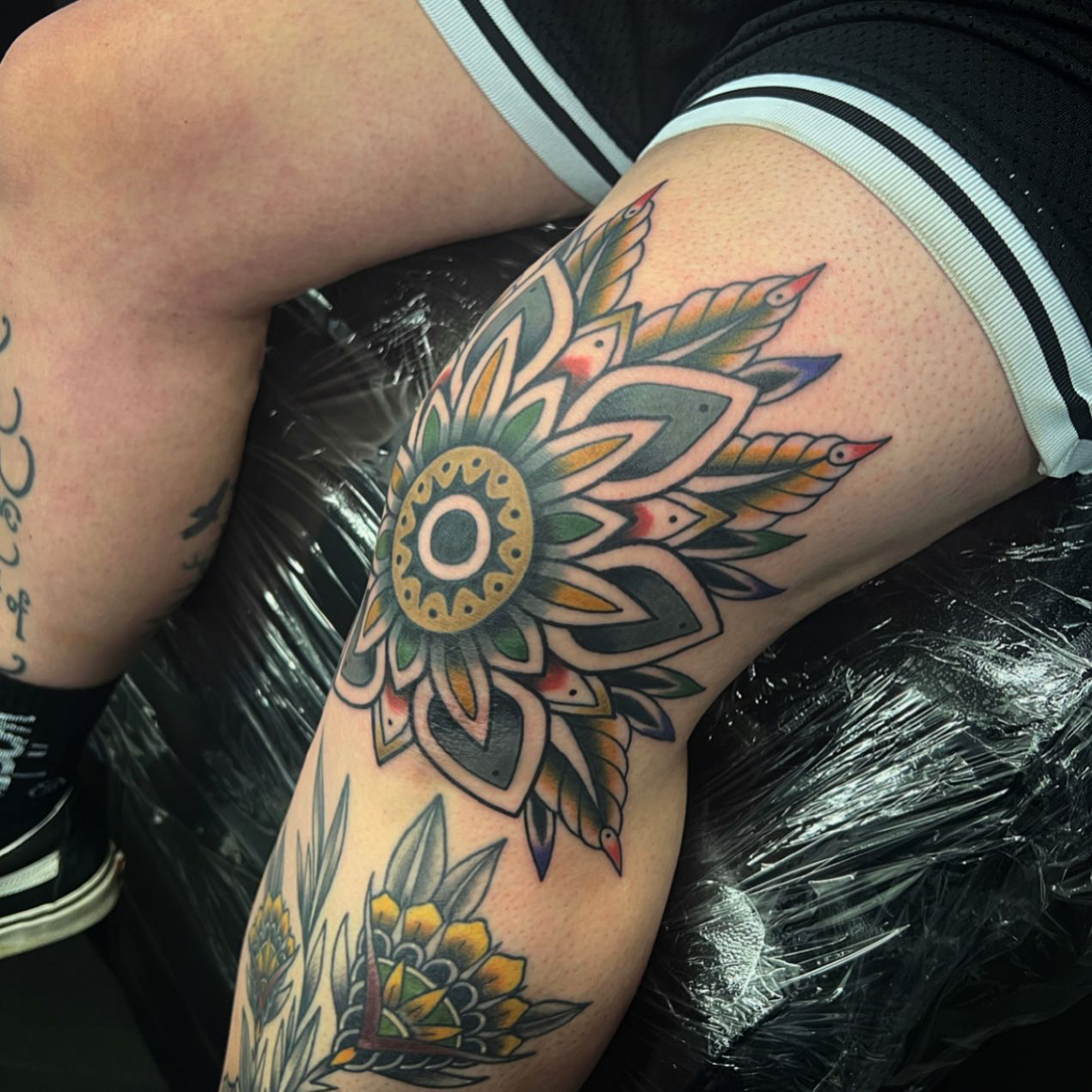
The crucial point: Don’t just look for a great tattoo artist; look for a great *geometric* tattoo artist. A portfolio full of beautiful floral or traditional work doesn’t guarantee they have the specific skill set for sacred geometry. Scrutinize their portfolio for clean lines, perfect symmetry, and experience with dotwork if that’s the style you want. A mandala’s perfection is unforgiving—it reveals an artist’s true technical mastery.

Thinking about adding color to your mandala?
While traditional mandalas are often rendered in black ink to emphasize their geometric structure, adding color can infuse your piece with personal meaning. Cool blues and greens can create a calming, watery effect, while warm reds and oranges can symbolize passion and energy. A popular modern approach is the ‘watercolor’ style, where splashes of color are added behind or within the black linework, giving it a vibrant, expressive feel without obscuring the core pattern.
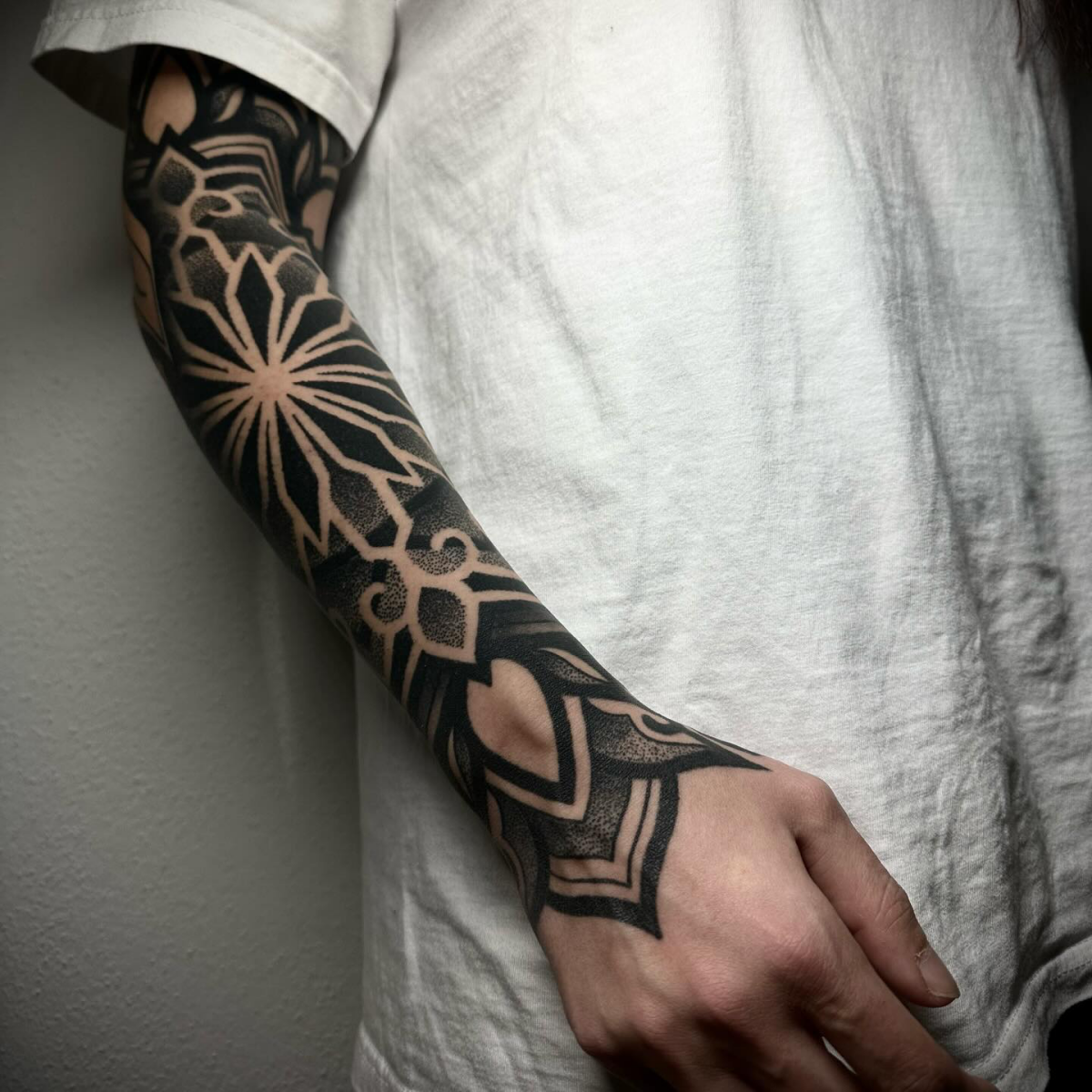
- Keep it moisturized. A well-hydrated tattoo is a happy tattoo, and fine lines need it most. A quality tattoo balm like Hustle Butter Deluxe can keep the skin supple.
- Sunscreen is non-negotiable. UV rays are the number one enemy of sharp lines, causing them to fade and blur over time. Apply a high-SPF sunscreen daily.
- Avoid constant friction. A mandala on your ankle might look great, but if your boots rub against it constantly, the delicate lines can wear down faster.
The good, of course, is always beautiful, and the beautiful is never disproportionate. – Plato

